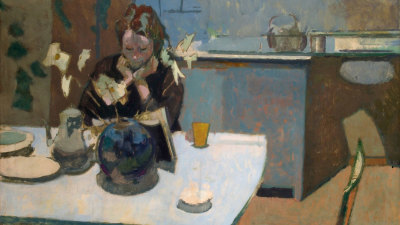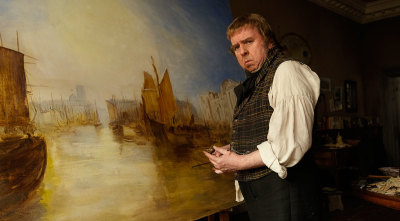Our pick of this week’s art events: 13 – 20 March
Our pick of this week’s art events: 13 – 20 March
RA Recommends
By Eleanor Mills
Published 13 March 2015
From eighteenth-century cityscapes of London to Vorticist sculptures in Cambridge.
-
Canaletto: Celebrating Britain
Compton Verney, London, 14 March – 7 June
Venetian painter Giovanni Antonio Canal (1697–1768), known as Canaletto, is famous for his immaculately detailed depictions of Renaissance Venice. The son of a theatrical scene painter, Canaletto used his inherited eye for detail to paint his home town of Venice, which quickly led to his success as an artist.
During the age in which affluent Englishmen would embark on their Grand Tour to see the wonders of ancient Rome and the exciting new wares of the Renaissance, Canaletto was well-placed, and taking home one of his paintings became a necessary for any touring art collector. Trade flourished for a long time, but in 1740, the War of the Austrian Succession began, and the rich Brits stopped visiting. Canaletto’s market evaporated. So in 1746 he moved to Britain and stayed there until 1755, transferring his skills of painting Venetian cityscapes to the Thames and Palladian architecture of London, and it is these scenes that go on show at Compton Verney. This one (pictured) was bought by George III in 1762 and depicts Somerset House in 1750–51, where the Royal Academy of Arts would be founded just 18 years later, in 1768.
-

Canaletto, London The Thames from Somerset House Terrace towards the City, c.1750-51.
Royal Collection Trust © Her Majesty Queen Elizabeth II 2015.
-
New Rhythms: Henri Gaudier-Brzeska Art, Dance and Movement in London 1911–1915
Kettle’s Yard, London, 17 March–21 June
A key member of the Vorticist movement, Henri Gaudier-Brzeska lived a short but tremendously creative life. Killed in battle fighting for his country in the First World War, the centenary of the French-born artist’s death is celebrated at Kettle’s Yard this spring in an exhibition of drawings and sculptures of dancers. The musculature and taut physicality of a dancer’s body, and the shapes they can create, provided Gaudier-Brzeska with the perfect subject for his curvilinear Vorticist sculptures, like the celebrated ‘Red Stone Dancer’, 1913–14. His work is set into context with dance-themed works by his fellow Vorticists and contemporaries, David Bomberg, Jacob Epstein and Percy Wyndham Lewis, among others.
-

Henri Gaudier-Brzeska, Red Stone Dancer, 1913 – 1914.
Image courtesy of Kettle’s Yard.
-
Last chance: A Strong Sweet Smell of Incense
Pace Gallery, London, until 28 March
As you walk into Pace Gallery, you immediately see two Pop Art symbols of the Sixties: Peter Blake’s quadruple portrait of The Beatles from 1962, and Richard Hamilton’s iconic Swingeing London 67 (a), 1968–69 (pictured). The latter depicts Rolling Stone Mick Jagger handcuffed to art dealer Robert Fraser, in the back of a police van after they appeared in court on drugs charges.
The celebrated art dealer and pioneer Robert Fraser is who this show is all about, and Pace have put together an impressive collection of work ranging from effervescent Keith Harings, great early Warhols, signature Dubuffets, Paolozzi sculpture and unusual Basquiats. This is a snapshot of a superbly exciting artistic period, with much of the talent of the time having been spotted and championed by Fraser. His close friend, artist Brian Clarke curates the show, and shows work of his own at Pace upstairs.
-

Richard Hamilton, Swingeing London 67 (a), 1968 – 1969.
Courtesy the artist. © R. Hamilton. All Rights Reserved, DACS 2015..
-
Maaike Schoorel: Sub-Lo
Maureen Paley, London, 14 March – 12 April
Dutch painter Maaike Schoorel paints using a palette of pale colour. Is her work abstract? It looks so at first glance, but look closely and the outlines of subjects appear from the background. Schoorel uses her work to delve into the capacity of the human mind to perceive. She explores this by presenting paintings that challenge our perception by showing us faint images that seem to appear, but immediately dissolve back into the background, a bit like magic eye puzzles. This is one of many doors of perception to open, and certainly one worth seeing.
-

Maaike Schoorel, Swans and Swimming Pool, 2014.
Oil on canvas. 173 x 137 cm. Copyright the artist, Courtesy Maureen Paley, London.
-
Painting Paradise: The Art of the Garden
The Queen’s Gallery, Buckingham Palace 20 March – 11 October
Can art ever be more beautiful than nature? The exhibition Painting Paradise proves it can. Look at Brueghel the Elder’s Adam and Eve in the Garden of Eden from 1615 (pictured), and you see a perfect idyll of flora and forna rampantly in season, with berries burgeoning from the tree behind. This is one of the many depictions of gardens that inhabit the Queen’s Gallery this spring. From forested scenes to the formal gardens of the 18th century, as well as a Faberge or two, this show tells the story of the garden in art.
-

Jan Brueghel the Elder, Adam and Eve in the Garden of Eden, 1615.

Workshop of Carl Faberge?, 'Bleeding Heart', c.1900
-
Eleanor Mills (@slinkissimo) is Assistant Editor of RA Magazine.









